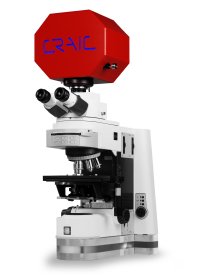Coal is a vital component in steel production as a source of carbon. CRAIC Technologies introduces its most advanced Vitrinite Reflectance Measurement System, the 308 Coal. The 308 Coal is designed to ensure that the coal blends used in steel production are optimum and consistent from batch to batch.
Coke is used as a reducing agent when smelting iron ore in the first stage of making steel. Coke is made by the pyrolysis of blends of low-sulfur and low-ash coal. The process is called "coking" and it is done to drive off the volatile components of coal leaving a gray, porous solid. Blends of bituminous coals are commonly used as the coal must have a certain amount of volatile matter in order to make good quality coke. Too much or too little results in poor quality coke. Generally, levels of 26 to 29 percent of volatile materials are considered optimum. Thus the coals and coal blends must be tested prior to being used to make coke and steel.

Different grades of coals are mixed together so that the coking process is consistent and that the volatiles are maintained at an optimum level. This requires testing of the coal so that it meets the specific criteria to make good quality coke and to maintain a high level of coke production. One of the most important tests is Vitrinite Reflectance.
Vitrinite is a maceral and is comprised of various polymers, cellulose and lignin. Measuring the amount of light reflected by vitrinite macerals is a key test to determine the thermal maturity of the coal blend and its suitability for steel production. The procedure has been standardized by a number of international bodies including both ISO and ASTM. All of the standards require the use of a microphotometer: a device designed to measure the intensity of light reflected from a microscopic sampling area at 546 nm. The procedure is simple: the microphotometer measures the amount of light reflected from samples from the coal blend at hundreds of points after which a statistical analysis is done by the computer.
The results of the statistical analysis are used to determine the amount of vitrinite in the coal blend, its thermal maturity and therefore its value for coking. As hundreds of measurements need to be done on each sample, this used to be a very time consuming process. Now, with the introduction of the 308 Coal and an programmable microscope, this process can even be automated to dramatically improve a laboratories throughput and accuracy. The results can be presented in all of the standard forms, ranging from tables to histograms, from which the thermal maturity of the coal to be used in steel production can be determined.